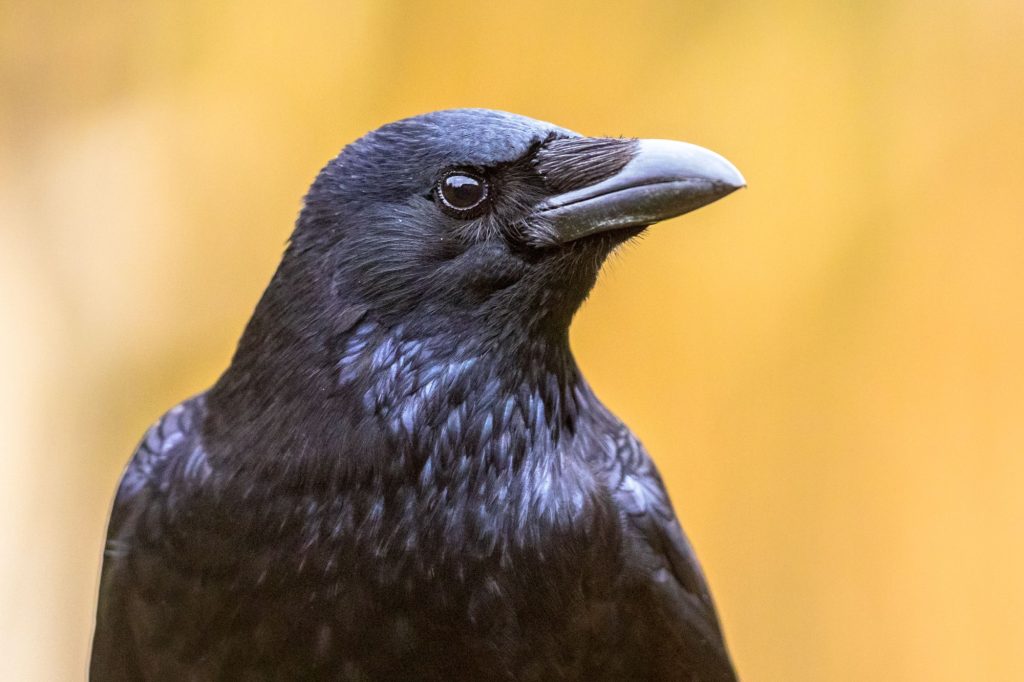Crows sure are mysterious. They hang around parking lots & fly in big groups at sunset, but behind those dark feathers, there’s a lot going on that’s not immediately obvious. Here are ten fascinating facts about crows that’ll surprise you. Which of these do you think is the most interesting?
Featured Image Credit: Shutterstock.
Crows bend wire into a working hook
In 2002, researchers gave a crow some wire & a bucket inside a tube. The crow bent that wire, then hooked the bucket & pulled a piece of bait right out of the bucket, even though nobody showed her how. She even reshaped new pieces when the originals were taken away, proving that crows are capable of tool design, right on the spot.
Some crows solve multi-tool puzzles in sequence
But that’s not all for tools. Crows can use a chain of tools to get something they want, like using a short stick to grab a longer stick, then using that to reach food. They work through it step by step. It’s rather incredible because it means that they’ve mentally pictured the whole plan ahead of time.
Crows remember specific human faces for years
Some crows hold grudges. In field studies, people wearing a “danger” mask trapped crows once, and then disappeared. Years later, when someone showed up in that same mask, the birds sounded the alarm instantly, proving that they could do more than just remember. They actually taught their friends who the enemy was & the memory stuck for close to three years.
They respond strongly to dead crows placed at sites
Crows don’t simply ignore a dead crow when it shows up somewhere. In fact, they’ll gather & caw like crazy, sometimes even calling in backup to help them. They’ll also keep that area in mind afterward. Clearly, crows treat a dead bird like a serious situation worth reacting to, and they can process death.
Crows use cars to crack walnuts
In Sendai, Japan, crows drop walnuts into traffic, and then they wait for cars to run them over. They’ve been seen timing their drops near crosswalks so that they’re able to safely grab the cracked nuts when the light turns red. Essentially, they’re using humans as a tool for their own gains. How incredible is that?
Their brains have “number neurons”
Crows have certain neurons inside their brains that respond to numbers, almost as though they’re tuned to “three” or “five.” And amazingly, they also get the idea of zero. Whenever crows see an empty set, they treat it as a specific quantity instead of just “nothing.” That’s a concept even some animals never understand.
American crows often breed with helpers at the nest
Unlike most birds, American crows don’t always raise chicks as a couple, as extra birds often help them out. These are usually grown offspring. The birds stick around to help feed the babies & guard the nest. Sometimes there’s a whole little family crew pitching in, almost like a backyard bird version of extended relatives.
A crow can sing with two independent tones at once
Hooded crows can actually make two separate notes at the same time. Their vocal organ has two sides that work independently of each other, so one side hits one pitch & the other hits another. The result sounds kind of like two birds singing together. But in reality, it’s just one showing off.
They raise water levels to reach floating food
New Caledonian crows don’t let water stop them from reaching their food. In one experiment, they dropped stones & other heavy bits into tubes full of water until the level rose high enough for them to get their food. They didn’t waste time with sand or lightweight stuff, but instead picked what actually made the water rise fast.
Some crows rub ants on their feathers
Bizarrely, crows don’t avoid ants. They’ve been witnessed rubbing the insects through their feathers or settling down on an anthill so the ants crawl over their bodies. It’s not exactly clear why they do this, but the behavior itself is well recorded. However, it’s possible they’re using the ants to remove bacteria.
The following sources were consulted in the preparation of this article:
- Shaping of Hooks in New Caledonian Crows
- Lasting recognition of threatening people by wild American crows
- Wild American crows gather around their dead to learn about danger
- Variations of behaviour of Carrion Crows Corvus corone using automobiles as nutcrackers
- Neurons selective to the number of visual items in the corvid songbird endbrain
- Reproductive partitioning and the assumptions of reproductive skew models in the cooperatively breeding American crow
- Songbirds use pulse tone register in two voices to generate low-frequency sound
- Using the Aesop’s Fable Paradigm to Investigate Causal Understanding of Water Displacement by New Caledonian Crows
- Anting behavior by the Northwestern Crow (Corvus caurinus) and American crow (Corvus brachyrhynchos)


